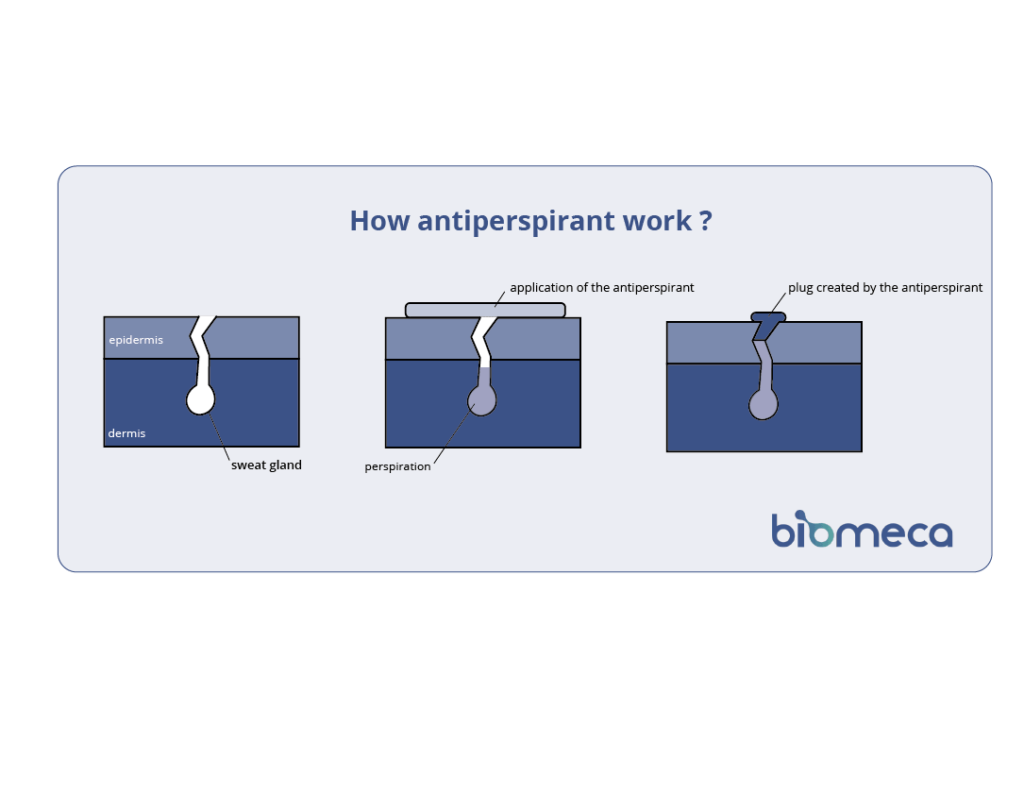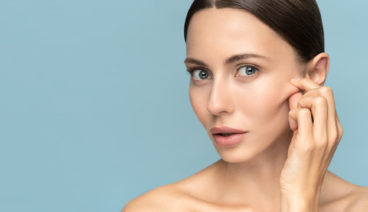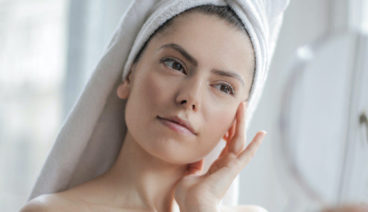Sweating is a natural physiological phenomenon which can be activated by various factors such as the temperature of the room you’re in, a physical activity, a fever or even an emotion. This process allows the body to regulate its temperature, and maintain it around 37°C, while eliminating certain toxins.
But, as natural as it is, sweating can sometimes become difficult to handle, mainly because of the odor. Originally, when the sweat is secreted from the sudoriparous glands, it has no odor. It’s only once arrived at the surface of the skin when it meets the bacterial flora and the oxygen of the environment that the sweat starts to have an odor.
It has become very common in our society to prevent the sweating inconvenience by using cosmetic products such as deodorant and antiperspirant daily.
The sudoriparous glands
These glands, also called sweat glands, are small coiled tubular structures found in the dermis on the skin throughout the body. There are two types of sweat glands: the apocrine glands and the eccrine glands. The eccrine glands’ role is to cool the skin by secreting a watery product, and they are present all over the body. The apocrine glands are only present in the armpit and genital area.
They activate during puberty and develop in association with hair follicles. It’s the secretion of the apocrine glands, a mix of fats and proteins carried from within the body, which creates an odor once it enters in contact with the bacterial on the surface of the skin.
The main difficulty is to study these glands and their function, as they are complex to isolate. Several methods exist to analyse these glands, such as stereoscopic microdissection of human skin but it’s a very difficult and laborious technique.
What is an antiperspirant and how does it work?
An antiperspirant is an agent which has an inhibitory action upon the secretion of sweat. This means that an antiperspirant aims at suppressing sweat when applied on the skin by blocking it.
Thanks to its active substance, most of the time an aluminium-based substance, the antiperspirant blocks the sweat secretions in the sweat glands by dissolving into the perspiration. This creates an acidic solution which diffuses in the sweat glands. Then, the solution hydrolises more in the alkaline sweat and agglomerates, creating a temporary gel-like plug. This plug will then reduce or completely suppress the sweat, depending on the amount of sweat secreted.
It is different from a deodorant which only masks the odor but doesn’t prevent the sweat from appearing. Antiperspirant, as well as deodorants, are currently sold in different forms such as sprays, sticks or roll-ons.

The composition of an antiperspirant
An antiperspirant always has the same basal composition: an active ingredient, a « carrier fluid » or solvent, emulsifying and structuring agents, additives and perfume. Other ingredients can be added, such as moisturizers.
Most of the time, the active ingredient is aluminium-based. However, in the last decade many researches have been made around the impacts of the aluminium’s application on the skin through antiperspirant. Various studies still argue on the potential negative outcomes of the daily use of aluminium.
Its long-term and increasing application close to the breast area can be problematic, as it is suspected to cause breast cancers by accumulating in the mammar gland and interfering with the oestrogen action. According to certain studies, it could also be implicated in the causes of Alzheimer’s disease.
Antiperspirants contain another controversial substance, paraben, which is also suspected to cause breast cancers by disturbing the body’s hormonal balance.
The natural solutions to replace aluminium-based antiperspirants
Due to the potential risks, the cosmetic industry has been increasing its range of deodorants for the past few years to replace the aluminium-based antiperspirant. Natural solutions such as aluminium free deodorant are getting more and more popular, and you can now easily find it at your local store. It’s important to note that these natural replacements are not antiperspirants, therefore they won’t have precisely the same effects as the aluminium-based formula once applied. The natural formula will mask the odor with a natural perfume and prevent the odor with an antibacterial agent, but the sweat will still be there as there isn’t any aluminium to block the sweat glands.
Antiperspirants seem to be slowly replaced by other healthier solutions such as aluminium-free and paraben-free products, and we can only hope that it continues the same path for the future, as the use of these types of products is only increasing with time.
However, it is still a challenge to understand the mechanism of action of perspiration for developing and evaluating these new solutions. Even though we know how to reduce odors, having insights about how to slow down the perspiration should give us new ways to replace aluminium-based antiperspirants. We think characterization of eccrine glands and evaluation of natural and healthier products on them should represent a great progress.
Discover our solutions
Skin barrier
Wound healing
Skin penetration
Follow our other news
The relationship between skin elasticity and viscoelasticity
 24 January 2024
24 January 2024Are you a smoker? Here’s how it affects your skin!
 29 November 2022
29 November 2022Why are simplicity and multifunctionality new trends in the beauty market?
 19 October 2022
19 October 2022





